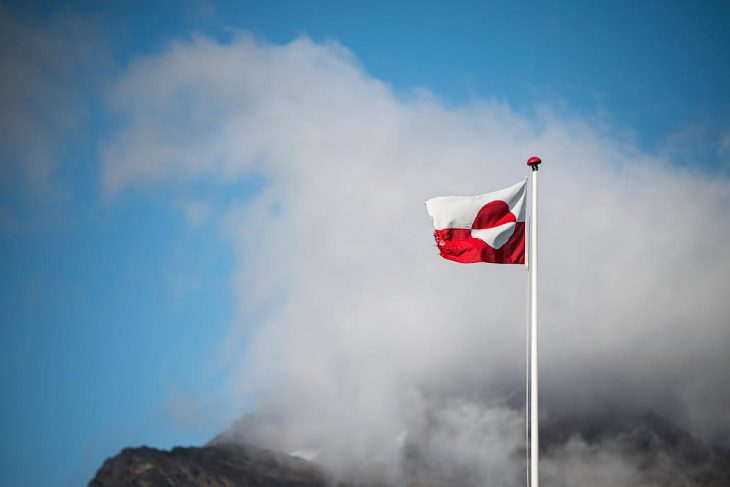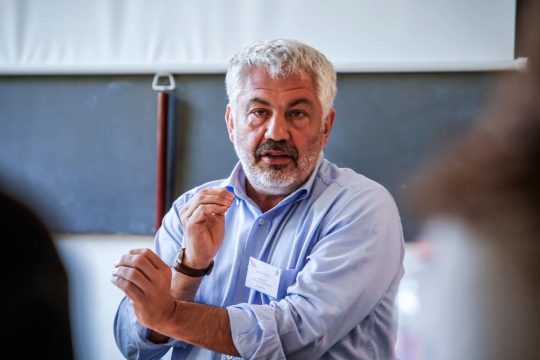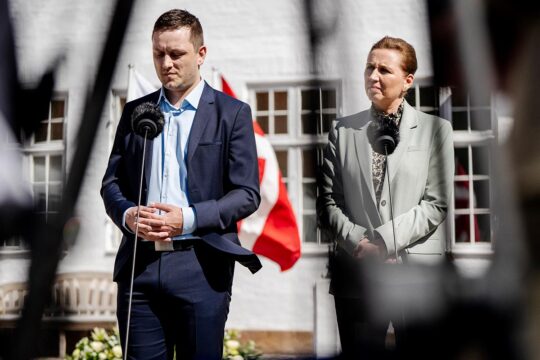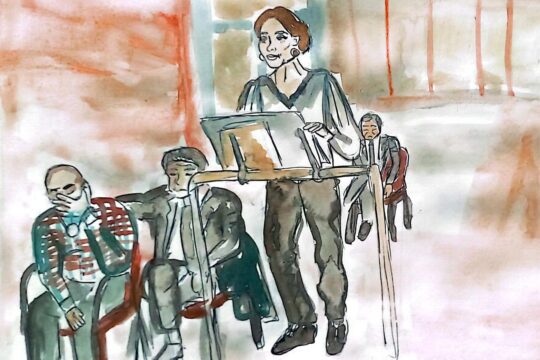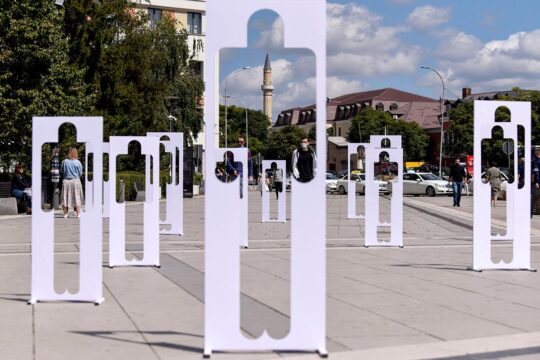Only two weeks ago, the Swedish government announced that it would establish a second Truth and Reconciliation commission (TRC) in addition to the already planned Truth commission on historical abuses and mistreatment of the Sami. The second is to deal with historical injustices committed towards the Swedish national minorities Tornedalians, Kvens and Lantalaiset.
This is just the latest TRC set up in the Nordic countries, which also counts the Norwegian TRC and planned Finnish TRC. The new Nordic TRCs often point to the Canadian TRC as a source of inspiration. However, though it is only mentioned occasionally, the first attempt to adapt the TRC model to a Nordic welfare state history was the Greenlandic Reconciliation Commission (GRC). And the other Nordic TRCs could learn important lessons from the Greenlandic process, especially in terms of handling the history of the Nordic welfare state – a topic that turned out to arouse ambiguous attitudes and strong reactions in both Greenland and Denmark.
The origins of Greenland’s reconciliation process
The Act on Greenland Self-Government of 2009 recognizes Greenland as a people pursuant to international law with the right of self-determination. Elected just a few years later, former Greenlandic Prime Aleqa Hammond (2013-14) saw a need to gain momentum for her declared political ambition of “independence in her life time”. In her view, mental decolonization was key to preparing Greenlanders to cut the ties from Denmark and establishing a reconciliation commission was a tool to get there.
Greenland with its 56.000 population is slowly transitioning towards ever-greater degrees of sovereignty. It formally ceased being a colony in 1953, when incorporated into Denmark as a county. In 1979, after two decades of intense political mobilization, it obtained Home Rule and in 2009 Self-Government. Together with the Faroe Islands, Greenland remains part of the Kingdom of Denmark (often referred to as the Unity of the Realm in Denmark), consisting of three countries united in one constitution and monarch. Greenland finds itself at the center of attention in an increasingly intense geopolitical struggle, recently witnessed in U.S. President Donald Trump’s offer to buy Greenland. The idea of future Greenlandic independence is shared by most Greenlandic political parties, although they disagree on when, how, on what conditions and not least, how the relations to Denmark should look like in the future.
Hammond’s government considered including Denmark in the reconciliation process at some point. However, Denmark itself opted out of the process early on; when asked about the GRC former Danish Prime Minister Helle Thorning-Schmidt (Social Democrats) answered: “We have no need for reconciliation.” One might have expected that this answer would lay the process dead. However, as mental decolonization and mastering one’s own past and future within Greenland was the main ambition to the GRC process, Hammond did not consider Danish participation crucial.
Reconciling Greenlanders with themselves
The GRC was established in August 2014. It consisted of six highly educated commissioners with no prior affiliations to Greenlandic political parties. The commissioners represented different groups within the Greenlandic society in terms of regions, ethnicities and language. Staying loyal to the mandate, the GRC only operated with a vague conception of Denmark as a colonial power, but did not attempt to mete out neither state nor individual accountability. Instead, the GRC formulated a four-sided reconciliation definition dealing solely with reconciliation within Greenland: 1) Reconciliation with one’s self and one’s own background (personal reconciliation); 2) Reconciliation with the past (things that happened); 3) Reconciliation between groups in the Greenlandic society (human relations at large); 4) Reconciliation between generations (on an individual level).
Interestingly, it was not the first odd 250 years of Danish colonization that preoccupied the GRC but rather the detrimental effects of the policies conducted in the period 1953-1979, after Greenland formally had ceased being a colony. In this period, often referred to as the modernization period, Denmark introduced a number of intensive reform programs meant to bring Greenland - now a region in a welfare state consolidating itself - on par with the rest of the population.
This meant radical changes for the Greenlandic population. After 1953, the traditional hunting culture was swiftly replaced with the cultural requirements of a modernized fishing industry. Greenlanders from small settlements were moved into huge modern building blocks in larger towns and the authorities rolled out different educational reforms, including efforts to increase the number of Danish-speaking Greenlanders.
The reforms aimed at heightening livings standards and improve public health – not least to put an end to the rampant tuberculosis. They did indeed increase public health considerably and gave some Greenlanders new educational opportunities. However, the gap between the official rhetoric of equality between Danes and Greenlanders, and the lived realities created frustrations amongst Greenlanders. Greenlanders increasingly felt sidelined in a development controlled by the Danish authorities. To some it inspired political action canalized into the political mobilization leading to Home Rule in 1979. To others, it resulted in an internalized feeling of inferiority leading to a host of social problems impairing Greenlandic lives for decades to come. It was exactly this feeling of being second rank, which Hammond wanted the GRC to address and mend.
Keeping Denmark out of the process
The GRC not only aroused strong objections in Denmark, it also encountered fierce opposition in Greenland. Surprisingly, this often came from Greenlandic politicians and intellectuals that had previously engaged with ideas of some form of process to reconcile or master the past. More than anything, this had to do with Hammond herself. Her political visions of an independent Greenland, her controversial decisions to allow mining for uranium and her line towards Danish-speaking Greenlanders deeply divided the Greenlandic public. Moreover, her short period in office was characterized by political scandals. Ultimately, she was ousted first from government and later from her party Siumut.
The heavy associations to Hammond kept haunting the public legitimacy of the GRC even after her fall. Moreover, the fact that Denmark was not part of the process led to some confusion as to who was to be reconciled with whom and not everybody shared the idea of a need of internal reconciliation – least of all one dictated by Hammond.
Articulating the injustices of the welfare state
The Greenlandic reconciliation process is often referred to as a failure in Greenland. When the GRC handed in its final report in December 2017, Greenlandic Prime, Kim Kielsen (Siumut) dryly commented that he had not yet had the time to read the (70-page long, easily read) report, clearly indicating that he did not intent to either. No real attempts to follow up on its seven recommendations have been made so far. In the 3 years it functioned, the GRC ended up being an object of intense political debate at first and almost complete indifference towards the end, which ultimately impaired the process substantially.
However, while the association to Hammond clearly made it difficult for the GRC to fulfill the task of creating reconciliation between Greenlanders, the process exposed other layers of emotions directly tied to the period 1953-79. For better or worse, the direct and indirect assimilation policies conducted in this period both created a high number of family ties between Greenland and Denmark. The fact that the reform programs – carried out in the name of equality and mostly with good intentions - in this period laid the foundation for a welfare state model in Greenland, including free public health and education, makes the critique of this particular chapter in history quite ambivalent to many Greenlanders. Articulating a critique would have been knotty even without Hammond.
Despite a number of variations, the Nordic TRCs, just as well as the Greenlandic, all deal with the history of the Nordic welfare state in its making. The critique implied is not of the regular neo-liberal sort, but one raised by population groups that are often depending on its services. This creates a very particular type of context to all the Nordic TRCs. Whatever turns they may take in the coming years, they will most likely run into the same convoluted topic and all the questions it implies. A look to Greenland could be instructive in that regard.

ASTRID NONBO ANDERSEN
Astrid Nonbo Andersen was until recently a visiting scholar at the Danish Institute for International Studies where she was employed full time as a postdoc from 2015 to 2018. Her principle area of research focuses on the politics of memory and history with a special focus on Truth and Reconciliation commissions, official apologies, claims for reparation and restitution. Her research primarily focuses on colonialism in the Nordic countries, Denmark and its former colonies - especially the US Virgin Islands, Greenland and Tharangampadi. Her article “The Greenland Reconciliation Process: Moving Beyond a Legal Framework”, is published in the coming Yearbook of Polar Law, Volume 11, 2019 (April 2020). Her book, “Ingen Undskyldning: Erindringer om Dansk Vestindien og kravet om erstatninger for slaveriet,” was published in March 2017 (Gyldendal). See also Andersen’s two-day conference here.


